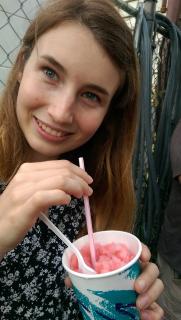Reflections on Service in New Orleans 1
By Ted Resnikoff

Facing the Legacy of Slavery
The following is the first of five reflections on a service trip that members of the Unitarian Society of Santa Barbara YRUU group made to New Orleans, LA. The group spent three days in New Orleans and six on the north shore of Lake Ponchartrain, working with local organizations through the Center for Ethical Living and Social Justice Renewal. The youth group’s work focused on the issues of racism and privilege with an eye toward taking what they learned to foment positive change in their home community. This trip was made possible by the industrious fundraising of the youth group (who we are told sold lots and lots of quiche), YRUU families, and the Unitarian Universalist Association Katie Tyson Fund for Youth and Young Adult Ministries. — ed.
by Frances KretschmerIt was incredibly hot on the day we visited the Whitney Plantation. We walked around the grounds with sun umbrellas, drinking from bottles of Gatorade. I was wiping sweat off my face with a handkerchief every few minutes. As our tour guide explained the harsh working conditions the enslaved people worked under, I could really understand how so many of them died from overwork. Although I already knew something about what slavery was like, it was completely different to be in a place where slavery actually happened. When we first walked into the plantation, we rang a bell as a sign of respect to the people who were buried in the ground beneath us. We went into the slave quarters and the plantation mansion. For me, slavery felt more real than it ever had.
The Whitney Plantation has three monuments to the victims of slavery, the only such monuments in the country. Considering slavery existed in America for about 250 years, it’s telling that people rarely question why there aren’t more monuments commemorating it. I certainly didn’t think about it before this trip. The monuments have the names of enslaved people who died, as well as quotes from them about what slavery was like. I realized that when we learn about slavery, it’s rarely from the perspectives of the slaves themselves
As a white person in California, it’s easy to distance myself from slavery, but it’s important to understand that it wasn’t just Southern plantation owners who benefited from it. For example, the metal slave pen and the carriage at the Whitney plantation were both manufactured in the North. The agricultural products of slave labor were bought in the North. White Americans still benefit from the economic prosperity generated by 250 years of free labor.
It can seem like there isn’t much racism in Santa Barbara, but this is partly because the town is set up so that white and non-white people don’t come into contact very often. I would like to learn more about local race issues and how I can help solve them. Slavery might have been concentrated in the South, but our whole country still needs to deal with its legacy.